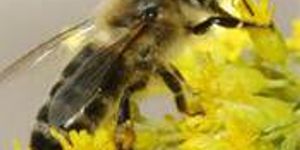Neuroscience
Bumblebees Learn Through Experience and Communication
MAR 26, 2014 12:00 AM PDT
Share
Plant Nanobionics Produces Living Chemical Detection Plants
 Imagine a chemical weapons, explosives, or toxins detection system that can produce its own energy and survive in harsh outdoor environments. This sensor system would operate in a green fashion - really green, as in plant-based systems.
Imagine a chemical weapons, explosives, or toxins detection system that can produce its own energy and survive in harsh outdoor environments. This sensor system would operate in a green fashion - really green, as in plant-based systems.Researchers at MIT have coined the phrase "plant nanobionics" to cover the general field of modifying plants through nanotechnology to serve specific purposes. Through the use of nanoscale particles such as carbon nanotubes and nanoparticles of cerium oxide, the research team has integrated nanotechnology into plants in a way that seems endless with possibilities. Their work was published recently in Nature Materials.
The initial work focused on integrating nanotechnology to enhance the efficiency of the plant. Carbon nanotubes were coated with a DNA film and integrated into plant leaves in a laboratory setting. The DNA coating allowed the chloroplasts in the cells to not only be attracted to the nanotubes, but to absorb them through the chloroplast's membranes without rupturing the membranes.
The nanotubes absorb light in a broader spectrum than an unmodified plant, and this in turn allows for enhanced photosynthesis. The team determined that the light absorption was increased by approximately 30 percent though the use of nanotubes. Use of different diameters of nanotube will likely alter the light absorption and penetrability of the chloroplast, so it may be possible to further enhance or optimize this effect.
As a follow-up, the MIT team has already taken a first step in using functionalized carbon nanotubes to produce a plant that acts as a chemical sensor. The reaction of the functionalized nanotube produces energy upon contact with the contaminant (in this case, nitric oxide), which can be picked up on an infrared camera.
Plants provide an exciting set of capabilities because they are in essence self-sustaining systems. They tend to repair minor damage to themselves, they can handle a variety of outdoor environments, by definition they do not harm the environment, and they are their own power source given enough sunlight.
Should this line of research progress to the next level, it could produce useful applications beyond the defense and detection applications considered here and do so economically. Due to the very small amount of nanotubes needed to produce the effect, these modifications can be made for less than a penny per plant.
Carbon nanotubes make outstanding sensors at very low concentrations, and they can be modified to detect many different chemicals by attaching different chemical receptors to the surface of the nanotube. If that modified structure can be introduced into the plant and retain its stability, the sky's the limit.
That, however, is a big "if." There is no information yet on the longer-term effects on the modified plants. Also, while the technology shows promise, there is no guarantee that the end results will be more sensitive, more effective, or sturdier than sensing systems that are already available.
Even with those caveats, the possibilities are so intriguing that the emerging field of plant nanobionics is likely to continue to grow-pun intended.
You May Also Like
Loading Comments...








